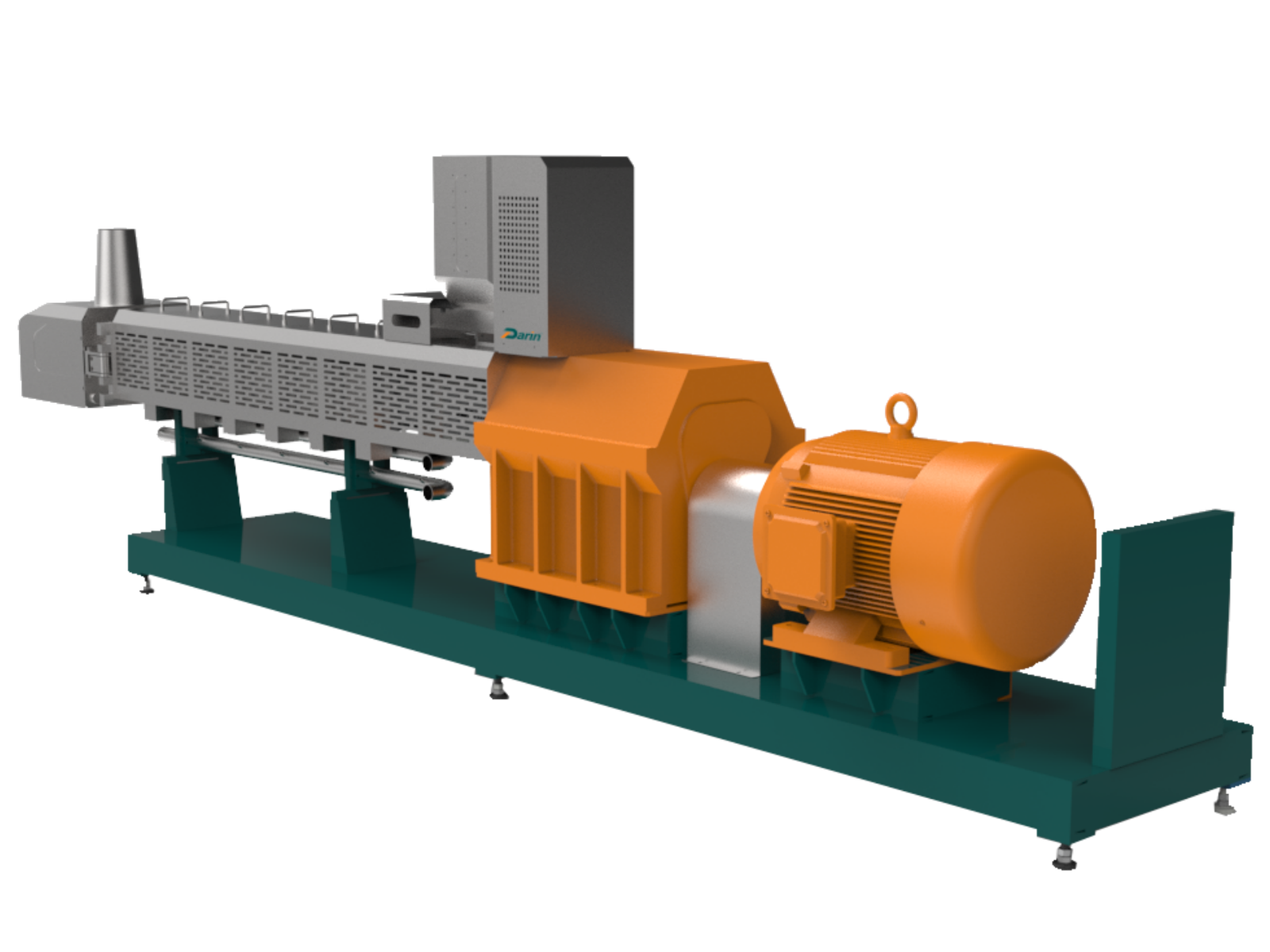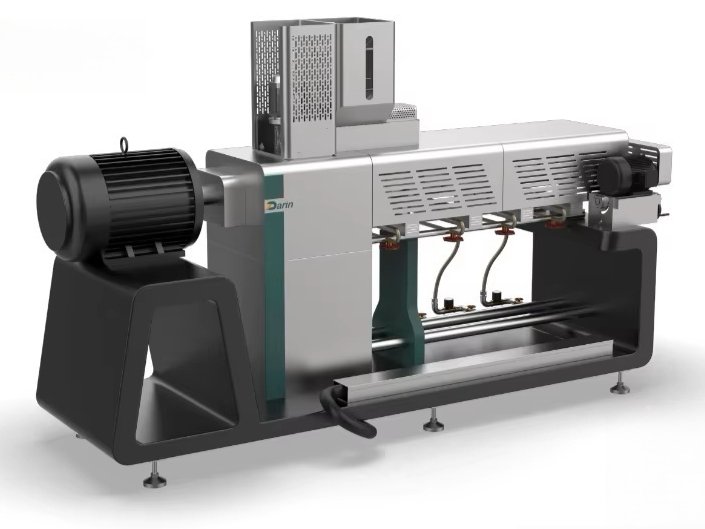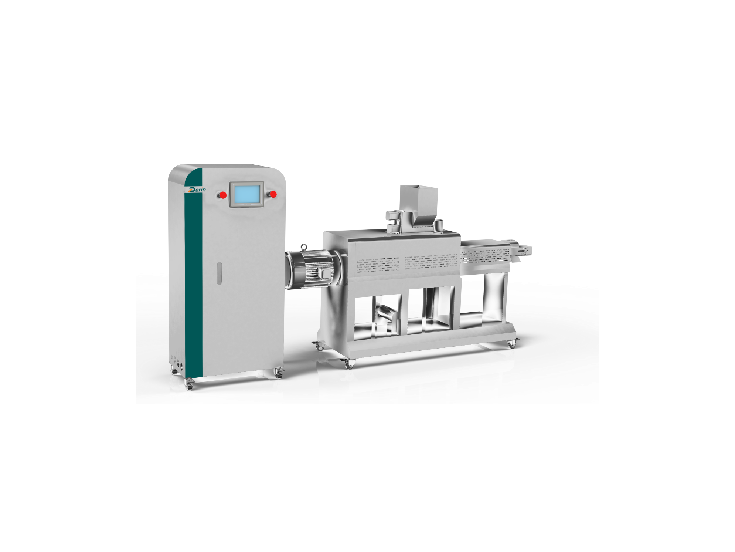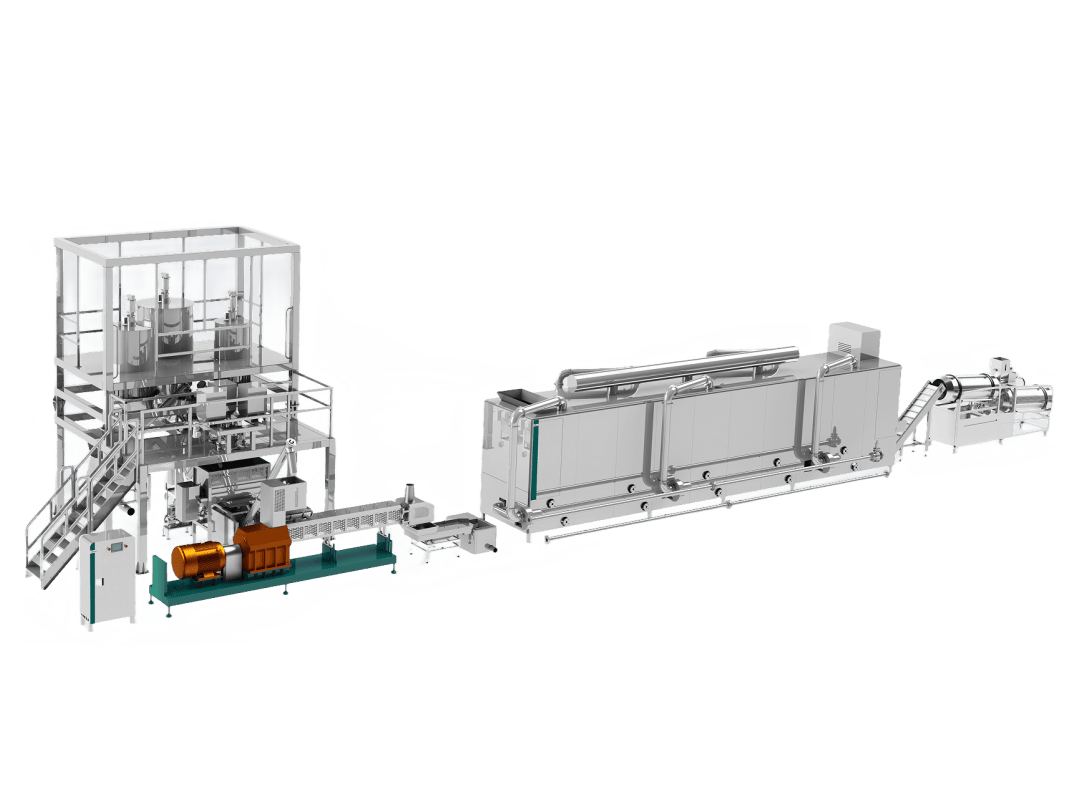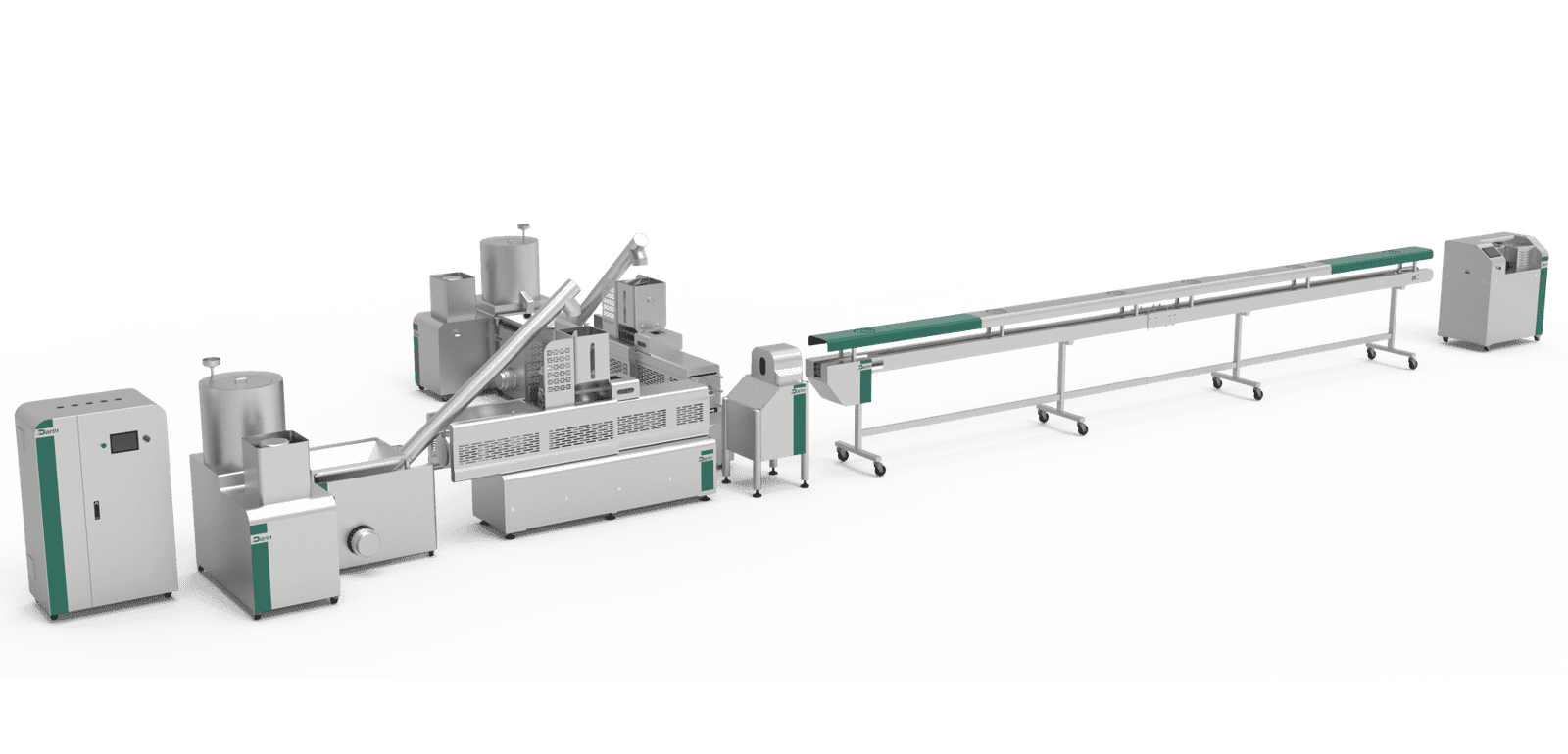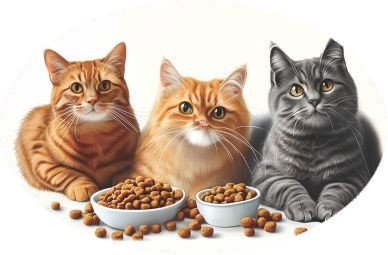
Modern pet food manufacturers face a key question when expanding or upgrading their production facilities — should they invest in a dry pet food production line or a wet pet food production line?
This choice impacts product quality, investment cost, energy efficiency, and market positioning. Selecting the wrong system can cause high energy consumption, inconsistent quality, and storage issues. Dry lines offer long shelf life and lower logistics costs, but wet lines provide richer palatability and premium appeal.
Understanding these differences from a technical and manufacturing perspective helps factory owners make profitable, long-term decisions. At Darin Machinery, we’ve designed and supplied both dry and wet pet food lines globally — for dog and cat food producers aiming to balance nutrition, taste, and efficiency.
Dry and wet pet food production lines differ mainly in moisture content, cooking method, and processing flow. Dry lines use low-moisture ingredients (below 12%) cooked by high-temperature extrusion and dried into crunchy kibble. Wet lines, on the other hand, use high-moisture meat ingredients (70–85%), cooked and sterilized in sealed cans or pouches for a soft, fresh texture. Dry lines are ideal for mass-market production with lower operating costs, while wet lines suit premium pet food with higher freshness and flavor retention.
The following guide offers a comprehensive 12-step technical comparison between dry and wet pet food lines — covering raw material handling, extrusion, sterilization, coating, and packaging. You’ll also see actual Darin Machinery equipment examples (e.g., DR-65, DR-70, DR-85, DR-95 twin-screw extruders) and retort sterilizers used in international installations. Whether you produce dog kibble, cat treats, or canned meals, this in-depth guide will help you design a process that maximizes both performance and profit.
Wet pet food contains more nutrients than dry food.False
Both can meet complete nutritional standards when formulated correctly. The main difference lies in moisture and texture, not nutritional value.
Step 1: Raw Material Selection and Preparation
The foundation of every pet food product lies in its raw materials. Both dry and wet production lines start here, but the type, condition, and handling of ingredients differ dramatically.
Dry Pet Food Lines primarily use ingredients like corn, rice, wheat, soybean meal, meat meal, fats, minerals, and vitamins — all in powdered or granular form with less than 12% moisture. These ingredients must be finely milled using a hammer mill to ensure uniform particle size. Darin’s automatic weighing and dosing systems precisely control ingredient ratios, ensuring formula stability and repeatable production quality.
Wet Pet Food Lines, conversely, focus on high-moisture materials such as fresh or frozen meat, fish, poultry by-products, and vegetables. These ingredients naturally contain 60–75% water. Instead of being pulverized, they are minced or cut to preserve muscle texture and juiciness. Wet food formulations emphasize palatability, protein integrity, and natural aroma, making them ideal for premium dog and cat food markets.
| Parameter | Dry Pet Food | Wet Pet Food |
|---|---|---|
| Typical Ingredients | Corn meal, soybean meal, meat meal, vitamins | Fresh meat, fish, poultry by-products, vegetables |
| Moisture Content | <12% | 60–75% |
| Grinding Size | 0.5–1.0 mm | 5–10 mm chunks |
| Main Equipment | Hammer Mill, Mixer, Screw Conveyor | Cutter, Bowl Chopper, Meat Grinder |
| Formula Focus | Carbohydrate expansion, protein denaturation | Texture, aroma, and meat binding |
High-quality ingredient preparation directly influences extrusion efficiency (for dry lines) and sterilization uniformity (for wet lines). Poor particle control or unbalanced fat levels can cause product deformation or inconsistent moisture content.
Wet pet food requires no grinding at all.False
Although coarser than dry food, wet formulations still require grinding or mincing to achieve a consistent texture and prevent segregation during mixing.
Step 2: Preconditioning and Mixing
The preconditioning stage prepares ingredients for efficient cooking. This is where moisture and heat are adjusted for optimal processing performance.
For dry pet food, Darin Machinery employs a steam preconditioner installed before the twin-screw extruder. Steam injection (at 90–100°C) partially cooks starch and proteins, improving expansion and digestibility. Moisture is increased from 10% to 25%, ensuring smoother extrusion and higher throughput.
For wet pet food, the preconditioning focuses on blending — not cooking. Ingredients are mixed at low temperature (below 40°C) to prevent premature microbial growth. Fat, binders, and gravy bases are evenly distributed using a vacuum mixer or ribbon blender. Darin’s vacuum mixers ensure homogenous mixing and air removal, preventing oxidation and ensuring consistent density before filling.
| Component | Dry Line | Wet Line |
|---|---|---|
| Temperature Range | 80–110°C | 25–40°C |
| Steam Use | Yes (direct injection) | No |
| Typical Equipment | Steam Preconditioner | Vacuum Mixer / Ribbon Blender |
| Moisture Increase | 10% → 25% | Constant (60–75%) |
| Mixing Duration | 1–3 minutes | 10–20 minutes |
| Output | Moist Dough | Uniform Emulsion or Meat Mix |
Darin’s Automatic Batch Mixer allows integration with recipe management software — enabling operators to store, recall, and adjust formulations in seconds. This digital traceability ensures consistency across multiple production batches, critical for brands supplying to export markets under strict quality control.
Step 3: Extrusion and Cooking Process
Extrusion represents the heart of dry pet food production and the most critical distinction between dry and wet processing systems.
Dry Pet Food Extrusion (Darin DR-Series Twin-Screw Extruders)
Darin’s DR-65, DR-70, DR-85, and DR-95 twin-screw extruders deliver precise temperature, pressure, and shear control — essential for producing uniform kibble with excellent expansion and texture. During extrusion, ingredients undergo:
- Mechanical Shear (protein denaturation & starch gelatinization)
- Thermal Cooking (steam and frictional heat at 120–180°C)
- Pressure Expansion (moisture flashing off at die exit, creating porous structure)
The extruder die defines kibble shape — bone, ring, triangle, or ball — and a rotary cutter adjusts length.
Wet Pet Food Cooking
In contrast, wet food is not extruded. Instead, it’s cooked and sterilized inside containers after filling. However, for semi-moist or chunk-in-gravy formulations, Darin’s meat chunk former and steam cooker preheat ingredients before retorting to achieve uniform coagulation and product integrity.
| Process Element | Dry Pet Food | Wet Pet Food |
|---|---|---|
| Main Equipment | Twin-Screw Extruder (DR-65/70/85/95) | Steam Cooker / Retort |
| Cooking Temperature | 120–180°C | 90–120°C |
| Pressure | 20–30 bar | 1–3 bar |
| Residence Time | 20–60 seconds | 30–60 minutes |
| Final Texture | Expanded, crunchy | Soft, moist, meaty |
| Key Control Variable | Screw speed, moisture, die pressure | Temperature, retort time, vacuum seal |
Why Extrusion Matters
Extrusion determines not only shape and density, but also:
- Digestibility and nutrient availability
- Water activity (aₑ) control
- Expansion ratio (bulk density of 250–350 g/L typical for kibble)
- Fat absorption ability during post-coating
For manufacturers, Darin’s modular extruder design allows flexibility — producing dog kibble, cat kibble, or aquatic feed simply by changing screw configuration and die sets. The result: one line, multiple product types.
Wet pet food is extruded like dry kibble.False
Wet food is not extruded. It’s cooked and sterilized in cans, trays, or pouches under steam pressure.
Step 4: Shaping and Forming
After cooking, the material must be formed into its final shape before drying (for dry food) or sealing (for wet food).
Dry Pet Food: Extruded dough exits the die as continuous strands, cut immediately by a rotary knife system into specific lengths. Each die design — round, square, star, bone, or ring — defines the kibble appearance. Darin offers quick-change die plates that minimize downtime when switching between product shapes.
Wet Pet Food: The shaping process occurs via filling systems. The cooked mix is filled into cans, trays, or pouches using piston fillers or vacuum depositors. For “chunks in gravy” recipes, Darin’s filling system ensures accurate ratio between meat and sauce (commonly 60:40).
| Step | Dry Pet Food | Wet Pet Food |
|---|---|---|
| Shaping Method | Die Plate + Rotary Cutter | Filling Nozzle / Piston Filler |
| Shape Control | Mechanical die | Package mold or portion size |
| Output Form | Pellet/Kibble | Filled cans or pouches |
| Automation Level | Fully automatic | Semi- or fully automatic |
Critical Control Point: The uniformity of product size impacts both drying (for dry food) and sterilization (for wet food). Uneven shapes can lead to moisture gradients or undercooked centers. Darin’s die systems maintain ±0.1 mm dimensional accuracy to ensure even downstream processing.
Step 5: Drying or Sterilization — Ensuring Shelf Stability and Food Safety
After extrusion or filling, the product must be stabilized to control microbial activity and extend shelf life. This is where the processing logic of dry and wet systems diverges completely.
Dry Pet Food: Hot Air Dehydration
In a dry pet food line, the extruded kibble typically leaves the extruder with a moisture level of 18–25%. To ensure shelf stability, Darin Machinery’s multi-layer belt dryer reduces moisture to below 10%.
The dryer consists of five to seven horizontal mesh belts, each circulating hot air between 100–160°C. Airflow direction alternates at each layer, achieving uniform drying without surface burning. Exhaust fans remove humid air while fresh hot air is introduced for efficient evaporation.
| Parameter | Typical Range | Purpose |
|---|---|---|
| Air Temperature | 100–160°C | Moisture evaporation |
| Retention Time | 15–45 min | Target 8–10% final moisture |
| Energy Source | Steam / Natural gas / Electric | Adjustable by region |
| Control System | PLC + PID feedback | Real-time moisture tracking |
Drying not only prevents spoilage but also influences texture and density. Over-drying increases brittleness, while under-drying causes mold growth and bag clumping. Darin’s smart dryer control system automatically adjusts conveyor speed and temperature based on inlet moisture readings.
Wet Pet Food: Retort Sterilization
Wet pet food, already sealed in its container, requires thermal sterilization rather than drying. Darin’s Retort Sterilizer (DRR-series) uses saturated steam or water spray to reach 121°C at 1.5–2 bar for 40–90 minutes, achieving commercial sterility (F₀ ≥ 3.5).
The process follows precise time-temperature curves:
- Heating Phase – Rapid temperature increase using steam injection
- Holding Phase – Maintaining sterilization temperature to destroy pathogens
- Cooling Phase – Controlled cooling to prevent package deformation
| Factor | Dry Pet Food | Wet Pet Food |
|---|---|---|
| Stabilization Method | Hot Air Drying | Steam Retort Sterilization |
| Target Moisture | 8–10% | 65–80% |
| Shelf Life | 12–18 months | 24–36 months |
| Typical Temperature | 130–160°C | 121°C |
| Duration | 30–45 min | 40–90 min |
Drying is optional for dry pet food.False
Drying is a mandatory step to reach safe moisture levels and prevent microbial spoilage.
Proper sterilization ensures safety equivalent to human-grade canned foods, while maintaining the soft texture that pet owners expect in premium wet products.
Step 6: Coating and Flavoring — Enhancing Palatability
Once moisture is stabilized, flavor and aroma are introduced — the final sensory signature that determines consumer acceptance.
Dry Pet Food: Vacuum Fat and Palatant Coating
After drying, kibble is cooled to below 40°C and transferred to a vacuum coater or rotary drum. Here, fats, oils, palatants, and vitamin solutions are applied. Under vacuum (-0.08 MPa), liquid coatings penetrate deep into the porous kibble, ensuring even distribution and oxidation protection.
Typical coating sequence:
- Primary fat layer (chicken/tallow/fish oil)
- Palatant spray (hydrolyzed liver or yeast extract)
- Nutrient coating (vitamin, enzyme, or probiotic solutions)
Wet Pet Food: Gravy or Jelly Addition
In wet food production, flavoring occurs before sealing. Gravy bases — containing hydrolyzed proteins, starch thickeners, and fats — are blended with cooked meat chunks at a ratio of 60:40 (meat:gravy). Darin’s gravy dosing systems maintain uniform viscosity and prevent phase separation during retorting.
| Coating Type | Dry Line | Wet Line |
|---|---|---|
| Fat Application | Vacuum fat coating | Fat included in gravy |
| Palatant Use | Surface spray | In-gravy inclusion |
| Vitamin Addition | Post-drying | Pre-cooking or pre-fill |
| Sensory Result | Crunchy aroma | Rich smell & soft mouthfeel |
Engineering Note: Darin’s vacuum coater integrates with a CIP (Clean-in-Place) system, allowing rapid cleaning without disassembly — critical for maintaining hygiene and avoiding cross-flavor contamination in high-volume operations.
Step 7: Cooling and Conveying — Protecting Product Integrity
Cooling finalizes the stabilization process before packaging. It prevents condensation inside bags or cans, which could otherwise lead to spoilage.
Dry Food Cooling
Cooled air passes counter-current to the product flow in Darin’s counterflow cooler. The kibble temperature drops from 80°C to below 40°C. Sensors ensure gradual temperature equalization, preventing micro-cracks in kibble structure.
| Specification | Value |
|---|---|
| Cooling Air Volume | 4000–7000 m³/h |
| Retention Time | 5–10 minutes |
| Outlet Temperature | ≤ Ambient +5°C |
| Cooling Principle | Counter-flow air exchange |
The cooled kibble is then conveyed through a vibrating conveyor to remove fines and dust — ensuring clean filling and reducing oxidation.
Wet Food Cooling
After sterilization, containers are cooled by water spray or immersion to 35–40°C. The cooling rate must be carefully controlled to prevent can deformation or pouch bursting. Automated retort systems by Darin use progressive water exchange cooling for uniform temperature distribution.
| Cooling Medium | Dry Line | Wet Line |
|---|---|---|
| Type | Air | Water / Air |
| Temperature Drop | 80°C → 40°C | 121°C → 35°C |
| Equipment | Counterflow Cooler | Water Bath / Cooling Tunnel |
| Energy Use | Low | Medium |
Wet pet food can skip cooling after sterilization.False
Rapid cooling is required to prevent over-cooking and to ensure packaging integrity.
Table 2: Post-Processing Comparison — Shelf Life, Energy & Labor
| Parameter | Dry Pet Food Line | Wet Pet Food Line |
|---|---|---|
| Stabilization | Hot air drying | Steam sterilization |
| Energy Source | Gas / Electric | Steam |
| Average Energy Use | 180–300 kWh/ton | 100–200 kWh/ton |
| Labor Intensity | Lower | Higher (cleaning & can handling) |
| Shelf Life | 12–18 months | 24–36 months |
| Product Texture | Crunchy | Moist and soft |
| Cleaning Frequency | Weekly | Daily (CIP/SIP required) |
| Sensory Appeal | Aroma & crunch | Fresh meat taste |
| Market Segment | Mass-market | Premium / Gourmet |
Step 8: Packaging Systems — Automation, Efficiency, and Market Presentation
Packaging defines not only the product’s shelf appeal but also its preservation quality and logistical efficiency. Both dry and wet pet food lines rely on automated systems, but their engineering logic differs substantially.
Dry Pet Food Packaging
After cooling and dust separation, dry kibble is conveyed into multi-head weighers and form-fill-seal (VFFS) packaging machines. Darin’s automatic packaging line supports bag sizes from 200 g to 25 kg, adaptable for retail or bulk distribution.
Key features include:
- Nitrogen flushing for oxidation prevention
- Anti-static hoppers to maintain smooth flow
- Automatic zipper or heat-seal functions
- PLC-controlled sealing temperature for multilayer PE/AL bags
Dry food packaging lines typically achieve 20–60 packs/min, depending on bag size.
Wet Pet Food Packaging
Wet food, by contrast, is filled before sterilization. Depending on the format — can, tray, or pouch — filling and sealing are performed by:
- Piston fillers (for pâté or minced formats)
- Vacuum fillers (for chunks in gravy)
- Can seamers / Pouch sealers integrated with retorts
After sterilization and cooling, containers are dried, labeled, and coded automatically. Darin’s fully automatic pouch retort line integrates robotic transfer arms for continuous processing, achieving up to 15,000 pouches/hour.
| Feature | Dry Food Line | Wet Food Line |
|---|---|---|
| Packaging Type | Bag (2–25 kg) | Can / Tray / Retort Pouch |
| Filling Method | VFFS / Multi-head Weigher | Piston / Vacuum Filler |
| Sealing | Heat Seal / Zipper | Double Seam / Heat Seal |
| Labeling | Inkjet or sticker | Inkjet or sleeve |
| Typical Speed | 20–60 packs/min | 150–250 cans/min |
| Nitrogen Flush | Yes | Optional |
| Automation Level | Fully automatic | Fully automatic with sterilization sync |
Design Insight:
Darin’s modular packaging systems can synchronize with MES or ERP software for production traceability. Each batch is digitally tracked, enabling automatic labeling with date codes, ingredient origins, and recipe IDs — ensuring compliance with FDA, CE, and ISO 22000 standards.
Wet pet food is packaged after sterilization.False
Wet pet food is filled and sealed before sterilization to maintain sterility and prevent contamination.
Step 9: Quality Control — Ensuring Consistency and Safety
Pet food must meet strict nutritional and microbiological standards similar to human food. Both dry and wet lines have defined critical control points (CCPs) in accordance with HACCP principles.
Dry Pet Food QC
Quality parameters include:
- Moisture Content: 8–10%
- Bulk Density: 250–350 g/L
- Crude Protein: 22–32% (dogs), 28–38% (cats)
- Aflatoxin and Salmonella: Non-detectable
- Color and Shape Uniformity: ±0.1 tolerance
Testing equipment:
- Near-Infrared Spectrometer (NIR) for protein/fat analysis
- Moisture Analyzer for rapid drying
- Hardness Tester for kibble durability
Wet Pet Food QC
QC focuses on sterilization efficacy and container integrity.
- F₀ Value Validation: ≥ 3.5 (commercial sterility standard)
- Microbial Testing: No growth under aerobic/anaerobic incubation
- pH Stability: <6.5 post-retort
- Seal Integrity: Visual and vacuum leakage test
- Sensory Test: Appearance, odor, and texture evaluation after 14-day incubation
| QC Aspect | Dry Food | Wet Food |
|---|---|---|
| Critical Control Point | Moisture & density | Sterilization & sealing |
| Microbial Load | <10³ CFU/g | Sterile |
| Physical Testing | Texture, expansion | Seal, texture |
| Shelf-Life Validation | Oxidation & rancidity test | F₀ and container test |
| Traceability | Batch ID / barcode | Batch ID / sterilization lot |
Darin’s PLC-based monitoring system records all CCP data automatically, enabling real-time analytics and compliance with ISO 9001 and GMP regulations.
Step 10: Energy Consumption, Maintenance, and Sanitation
Energy efficiency and equipment hygiene determine long-term profitability. Each line type has distinct maintenance needs.
| Factor | Dry Pet Food Line | Wet Pet Food Line |
|---|---|---|
| Main Energy Use | Extrusion + Drying | Steam + Sterilization |
| Average Energy Cost | 180–300 kWh/ton | 100–200 kWh/ton |
| Steam Use | Moderate | High |
| Water Use | Low | High |
| Maintenance Frequency | Weekly | Daily |
| Cleaning System | Optional CIP | Mandatory CIP/SIP |
| Sanitation Standard | Feed-grade / HACCP | Food-grade / Retort validated |
Dry lines have fewer sanitation constraints due to lower moisture environments, but require extruder screw inspection and dryer cleaning weekly. Wet lines operate under strict sanitary design with stainless steel (SS304/SS316L) construction and CIP (Clean-in-Place) circuits integrated with alkali and acid washing cycles.
Darin’s latest Energy Recovery Retort System reduces steam consumption by 15–20% through heat exchange technology — lowering both carbon footprint and operational costs.
Wet food production consumes less energy overall than dry extrusion lines.True
Although sterilization is steam-intensive, the absence of high-temperature drying and mechanical extrusion results in lower net electrical power consumption.
Step 11: Automation and Digital Control
Both dry and wet lines can achieve full automation — but with different control strategies.
- Dry Line Automation: SCADA system integrates ingredient dosing, extrusion, drying, and packaging. Operators can monitor product density, moisture, and temperature in real time.
- Wet Line Automation: PLC-controlled batching, retort scheduling, and safety interlocks manage complex sterilization sequences.
Darin Machinery’s IoT-enabled production systems provide remote diagnostics and recipe management. Through the Darin Smart Factory Platform, clients can monitor production yield, energy usage, and maintenance status via cloud dashboard — improving OEE (Overall Equipment Efficiency) by up to 12%.
| Control Level | Dry Line | Wet Line |
|---|---|---|
| PLC Integration | Full line | Full line |
| SCADA / MES | Yes | Yes |
| IoT Connectivity | Optional | Standard |
| Remote Support | Available | Available |
| Recipe Management | Auto-calibration | Multi-batch scheduling |
Automation Benefit:
A fully automated Darin pet food line reduces human labor by 30–40%, minimizes contamination risk, and guarantees consistent batch quality — essential for exporters serving Europe, North America, and Japan.
Step 12: Global Market Insight & ROI Analysis
The choice between dry and wet pet food lines is also a business strategy. Market data shows differing growth trajectories for each category.
| Global Segment (2025 est.) | Market Value (USD) | CAGR (2024–2029) | Key Drivers |
|---|---|---|---|
| Dry Pet Food | $82.5 billion | 4.8% | Affordability, shelf stability |
| Wet Pet Food | $41.2 billion | 6.2% | Premiumization, freshness trend |
| Semi-moist / Treats | $12.9 billion | 7.5% | Convenience, hybrid feeding |
| Total Global Pet Food Market | $136.6 billion | 5.4% | Urbanization, humanization of pets |
Investment ROI Comparison
| Metric | Dry Pet Food Line | Wet Pet Food Line |
|---|---|---|
| Average Capacity | 500–3000 kg/h | 500–2000 kg/h |
| Initial Investment | $180,000–$650,000 | $300,000–$950,000 |
| Payback Period | 1.5–2.5 years | 2.5–3.5 years |
| Energy Cost / ton | $22–30 | $18–25 |
| Product Value / ton | $1,200–2,000 | $2,500–4,500 |
| Market Position | Mass production | Premium niche |
| Global Export Demand | High | Very High (Asia → EU/US) |
Industry Outlook:
- Emerging markets (Southeast Asia, Latin America) still prioritize dry kibble for its affordability and logistics advantages.
- Developed markets (EU, Japan, North America) are shifting toward wet and semi-moist foods, especially for cats and senior pets requiring softer diets.
- Hybrid lines (dry + semi-moist or retort + extruder integration) are becoming popular among manufacturers seeking flexibility.
Darin Machinery’s modular line designs allow clients to start with dry extrusion and later expand into wet retort systems, maximizing ROI without redundant infrastructure.
Choosing the Right Line
When deciding between dry and wet pet food production, consider both technical capability and market alignment:
- Choose a Dry Pet Food Line if your goal is high-throughput, long-shelf-life kibble with minimal operating cost.
- Choose a Wet Pet Food Line if you target premium, high-moisture, human-grade products with gourmet positioning.
Both systems, when engineered correctly, can deliver superior nutrition, consistent quality, and profitability. Darin Machinery’s decades of experience enable clients to integrate extrusion, drying, sterilization, and packaging into one seamless automated solution.
Build Your Pet Food Factory with Confidence
If you’re planning to invest in a pet food plant or upgrade an existing facility, Darin Machinery offers:
✅ Turnkey project design (layout, formulation, process integration)
✅ Equipment supply for both dry & wet lines (DR-65/70/85/95 Extruders, Retort Sterilizers, Coaters, Dryers)
✅ Free Factory Layout & Recipe Testing Support
✅ On-site installation, training, and after-sales service worldwide
📞 Contact Darin Machinery today
🌐 Website: www.petreatsmachine.com
📧 Email: darin4@darin.cn
📱 WhatsApp: +86 156 5000 7983
Your trusted partner for innovative, efficient, and profitable pet food production solutions — from raw material to retail-ready packaging.


